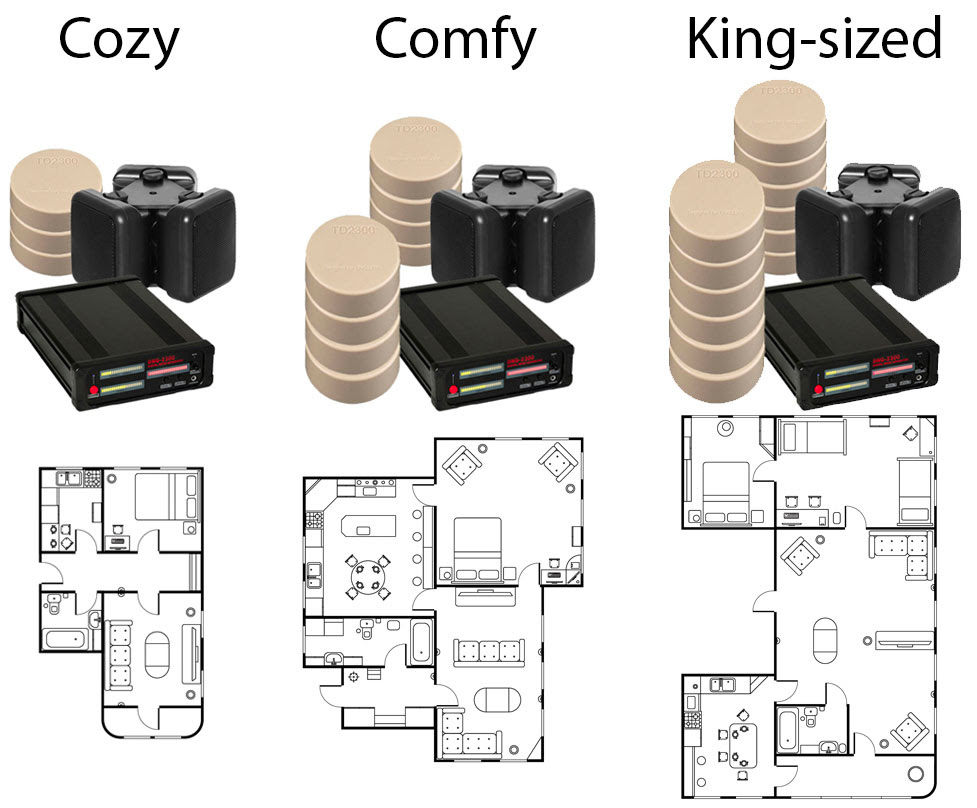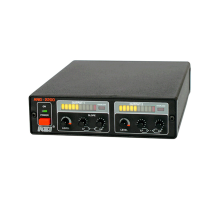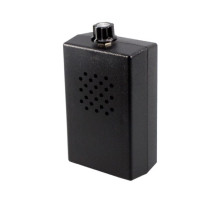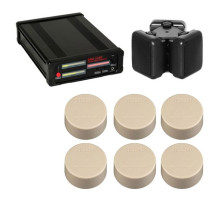













Listening devices, bugs, thin walls or the carrying of a voice don’t stand chance against DNG2300-4 White noise generator sound masking system.
When is paired with transducers and speakers, it produces low level audible interference by creating vibrations onto surface in protected space. If any form eavesdropping devices are used will block voices instead pick up relay back vibrational created counter surveillance device. You’ll want to have good spread speakers amongst wallspace, number depend on size construction room. ( all device also sold separately) installation required.
It well-known that distributes through walls, doors, windows other constructions. some materials travels even better than air. For example, water conductor heating system can pass conversation out Eavesdroppers take advantage this use contact microphones. These microphones from air ducts, plumbing, structures, windows, floors, ceilings more. may not be same room as conversation, but several floors rooms away attached pipe fixture. DNG-2300 render useless. non-filterable acoustic which transferred constructions speakers. REI’s TRN-2000 recommended transducer DNG-2300. has optimal power parameters set different types surfaces. injects most its into surfaces while only tiny part gets inside does force people speak louder. supplied adapters mounting ceilings, etc. speaker OMS-2000 inject radiates surrounding usually ceiling tiles, etc
class="spec-size-14">
TRULY RANDOM NOISE
The consists 3 independent digital generators. “White” means fully equally distributed along spectrum. distribution provides complete resistance filtering conversation. Another feature unpredictability i.e. there no method wipe recorded
VOICE MASKING
Men’s women’s consist lots frequencies simultaneously produced during speech. lie between 100 Hz 6000 Hz. Listening narrower range mostly because limitations, scheme battery time. DNG2300 250-5000 cover suppress devices. class="spec-size-14">OPERATION
LOOPBACK INPUT
Features:
3 Channel x1 helps protect from
- Laser & Microwave systems using reflections windows
- Electronic stethoscopes (contact microphones)
- Microphones built construction
- Other Vibro-Acoustic methods information leakage
White generators widely protecting premises leakage SP2300 omnidirectional important component system. generated structures stopping distributing them, role fill voids, cavities ventilation shafts audio prevent
Creating voids/cavities increases general protection preventing kinds as:
- Listening help wall behind adjacent cavity (typically top floor drop ceiling)
- Leakage outside void/cavities (for common holes pipes system)
- Bringing wired void
- Hiding covert void cavity
Ventilation voids leading room
Ventilation makes possible carry without penetrating zone. propagates shafts/voids picked remotely. case sufficient distance run within shaft. order speech positioned void/shaft. large enough accommodate speaker, disassembled holders.
Since assembled them separately smaller voids. Disassemble removing triangle holders, cut cables, place where then connect again series.
- Use 1 x big shaft "1/3" void
Space
Sound directions; therefore, easily under ceiling. popular are:
1) Drilling hole tube extender preferred over direct hides signs work.
2) Placement bugging space
The mentioned methods. partitions ceiling, quantity selected correspondence following suggestions:
- 1 per 9-10 square meters
Connection
Depending choose wiring diagram below picture. Consider generator's minimum load (8 Ohm DNG2300)
The output divided so when more unit receive less power. percentage shows relative comparing variant parallel connection
- "100% level" shafts
- "50% – regular voids/cavities
- "33% small voids/cavities
Combining levels done, care should taken verify correct volume speaker. reflects power, real control. Typically, higher. determine conduct tests probe. test active adjust external probing capture near void/cavity.
In fact additional describes.
1. manual only
2. braket supplier set
3. cord installed around m. Lenght cable depends wires, exmple, you 0.22 m2 30 m, 0.75 60 REI..
The connected generator, efficient The SP2300. adjustable feed 12 simultaneously.
TD-2300 Transducer
- Compact design, fits great structures
- Includes install surface
- Attractive looks interior High output, combined compactness well included Passes desired vibration, producing frequency characteristics optimally correspond spectrum human's Perfectly suited DNG 2300 generator
The TD2300 vibroacoustic inducts building, signals. provide generator.
SP-2300 Speaker
- Creates devices
- 3 way directional te isn't ventilation
- Connect one generator
Specifications
- SP-2300 SPECIFICATIONS
- POWER: 9W
- IMPEDANCE: 24 Ohm
- WEIGHT: .79 lbs
- DIMENSIONS: 4.33 in. 3.15 in
- Transducer Max 2x10W
- Frequency Response 260 6500Hz
- Min Impedance Ohm
- Acoustic 8W
- Frequency 250-5000Hz
- Min 8 Ohm
- TD2300 TRANSDUCER
- FREQUENCY RESPONSE: 58 Hz-12 kHz
- IMPEDANCE: 4 Ohm
- DIMENSIONS: 2.13 .83in
- WEIGHT: .56 lbs
- POWER: 10W
Included piece item
- 1 DNG-2300
- 3 TD-2300 kits
- 1 SP-300 Ft cord
Included DNG-2300
Included DNG-2300
It etc.
The TRULY Men’s OPERATION measurements. manual. OMS2000 separately. Their situation. REMARKS REGARDING PREPARATION instruction installation, wiring, testing protects perimeter area, planted close proximity speaker’s jammed Therefore prior perform thorough sweep accompanied physical search. performing detection location tools used: radio field indicators (bug detectors), interceptors, counters, probes, analyzers, your dealer choosing ordering sweeping service. accessible detected equipment, lot found methods: microphones, fiber optic passive resonators, inactive remote controlled “dormant” nondetectable search very countersurveillance work.
There are no reviews for this product.
No questions about this product.





